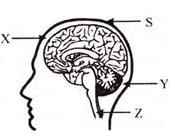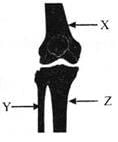Test: Human Body and Their Needs- 3 - Class 5 MCQ
20 Questions MCQ Test - Test: Human Body and Their Needs- 3
Identify the part of head labeled as S, X, Y, Z


| 1 Crore+ students have signed up on EduRev. Have you? Download the App |
Which of the following disease is caused by contaminated food and water?
Which of the following is normal hemoglobin range?
Our actions could be voluntary and involuntary. From the given list of actions, identify involuntary actions
(i) Chewing of food
(ii) Digestion of food
(iii) Heart beating
(iv) Breathing
(v) Dancing
(vi) Singing
(vii) Standing upright
The diseases which spread through contacts, through breathing and contaminated food and water is known as
Which type of joint at shoulder allows the full circle rotation of upper limb?
Which joint can be grouped under ball and socket type joint?
We are about to move our neck in a rotational way, it is possible due to which type of joint in neck?
Which of the following disease is not a vaccine preventable disease?
Picku has some nutritional deficiency disease. He has bleeding gum, swollen and painful knee. Which disease he may have
The muscle which is under our control and helps in movement is
In case of diarrhea and dehydration which of the following is very helpful?
In case of heat stroke in summer season which will be helpful
Mosquito spreads which of the following disease?
Which of the following action is a reflex action.


















